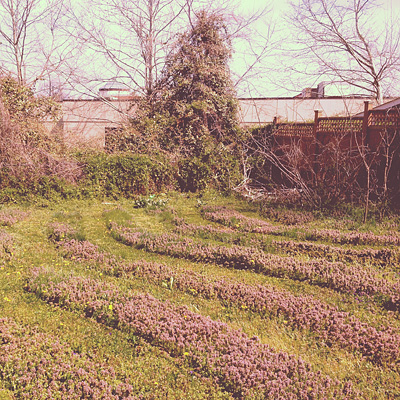"Cues to human care, expressions of neatness and tended nature, are inclusive symbols by which ecologically rich landscapes can be presented to people and can enter vernacular culture. Working from vernacular culture is necessary to infiltrating everyday acts of landscape change and ultimately achieving radically innovative pervasive landscape structure."
Joan Nassauer, from Messy Ecosystems, Orderly Frames



Especially following the economic decline of the post-industrial city and post-war suburb, vast areas of the U.S. are now shaped primarily through their landscape maintenance. As such, it functions as an infrastructural service to prevent vacant lots and other vague terrain from getting “overgrown.” In this context, the ecological benefits gained from spontaneous revegetation are usually overlooked and instead are perceived negatively as a sign of blight or neglect.
Field moiré utilizes the efficiency of the zamboni to pattern spontaneous vegetation, balancing the tension between care and neglect, cleanliness and biodiversity. By taking a second pass perpendicular to the first, patterns emerge based on the geometry of the site to frame the urban wild. In this particular yard model, a weed infested lawn is transformed into a suburban meadow moiré, highlighting the ornamental potential of Prunella, Viola, Ranunculus and Taraxacum.
